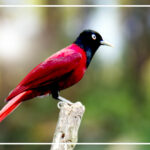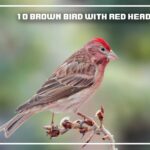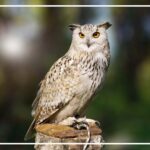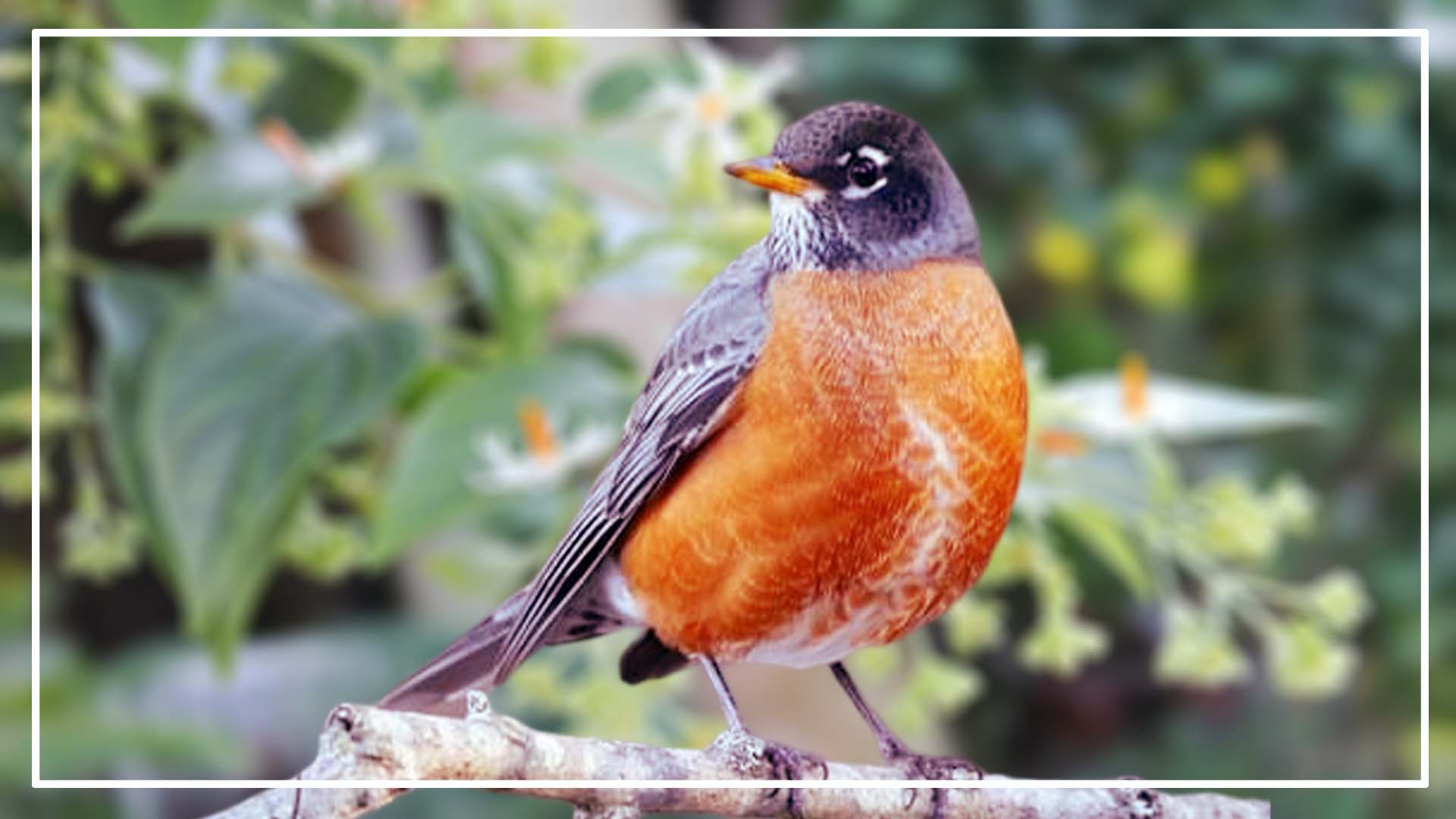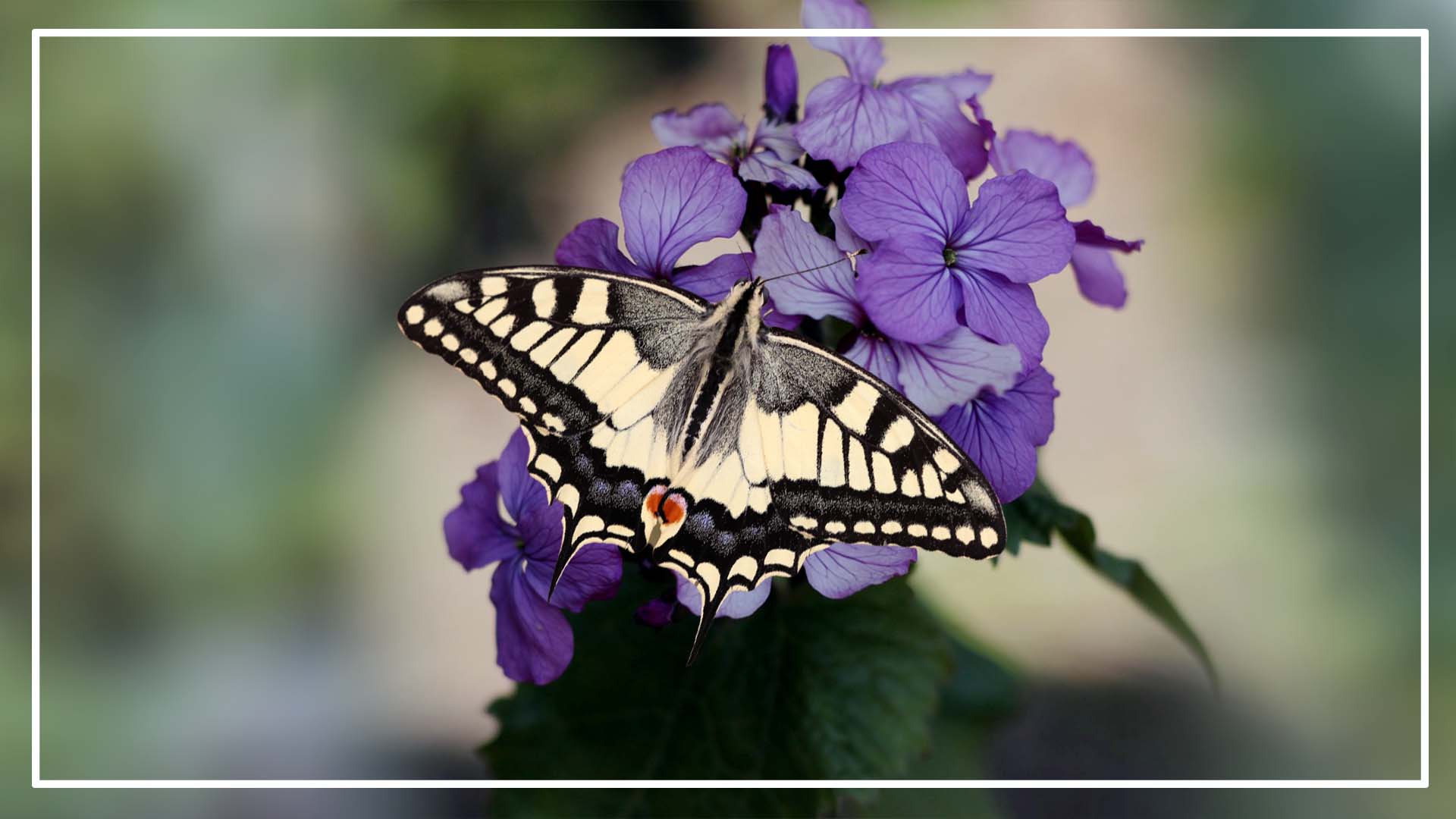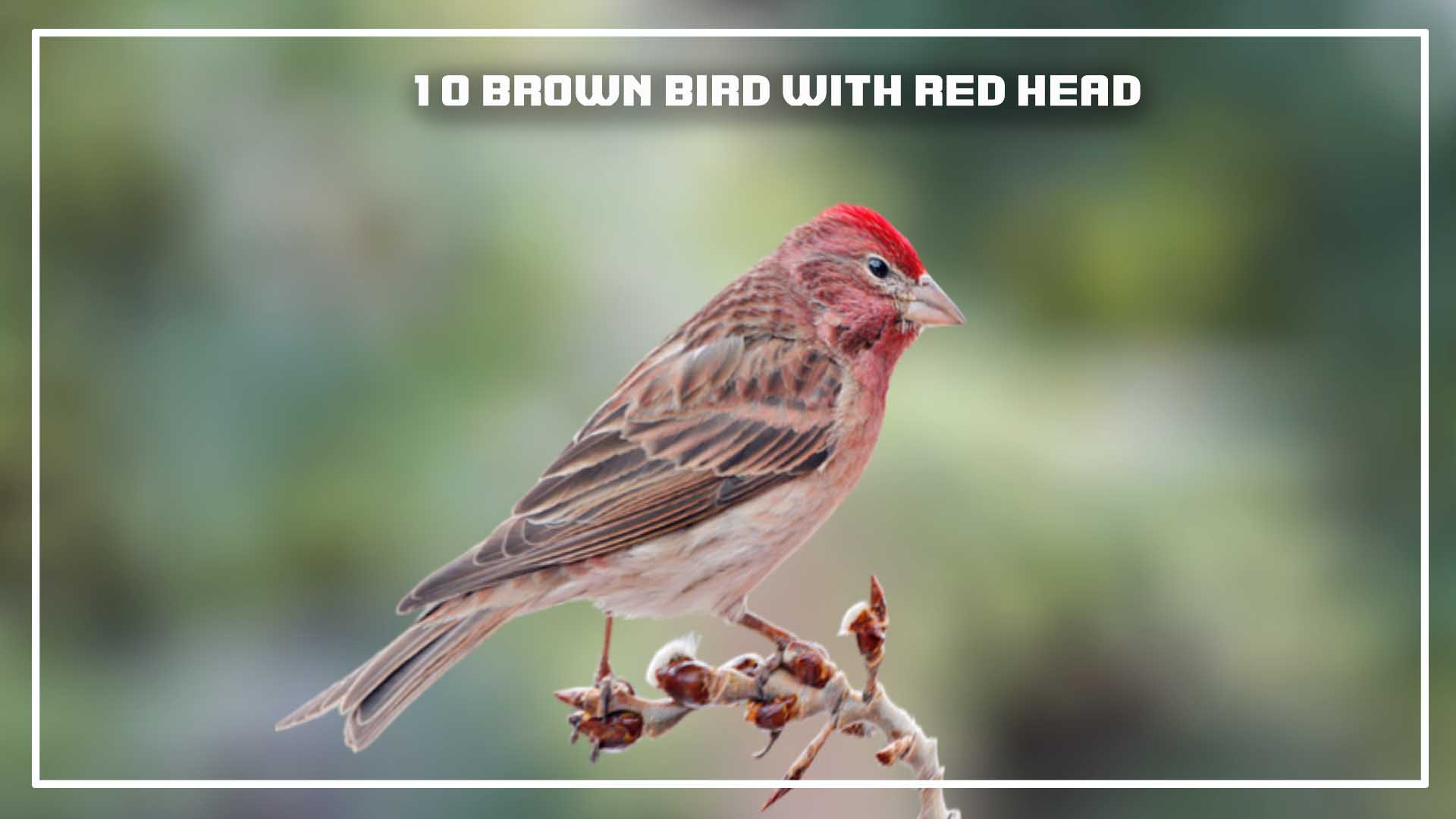In the world of birds, where colors and patterns mesmerize, there exists a captivating group of species – brown birds with orange chests. These feathered creatures, adorned with vibrant hues, captivate our attention with their beauty and grace.
Each species possesses its own unique characteristics and charm, showcasing the remarkable diversity found within the avian kingdom.
However, You wanted to see the brown birds with orange chests! Yes, We discovered 8 brown birds with orange chests. We shared the color patterns, behaviors, size, and diet of each bird.
Brown Birds With Orange Chest
There are eight birds with orange chests such as American Robin, Orchard Oriole, American Woodcock, Orange-breasted Waxbill, Red Knot, Rufous Hummingbird, Northern Cardinal, and Stonechat. These birds bring together the warm hues of brown and orange in a stunning display of nature’s artistry.
American Robin

The American Robin (Turdus migratorius) is a fascinating example of a brown bird with an orange chest. With its medium-sized body, it measures about 9-11 inches in length and has a wingspan of approximately 12-16 inches. The plumage of the American Robin showcases a delightful combination of brown and orange hues.
The bird’s head, back, wings, and tail feathers are predominantly dark brown, while its breast and underparts feature a vibrant orange-red color, extending from the throat down to the belly. This orange chest acts as a distinguishing feature and gives the American Robin its unique charm.
In terms of behavior, the American Robin is known for its lively and energetic nature. These birds are often spotted hopping across lawns and gardens, using their sharp eyes to locate earthworms and insects hidden beneath the soil. They also have a distinct way of foraging: they tilt their heads to one side to listen for earthworms, then swiftly pounce on their prey once detected.
The American Robin is highly social and can be seen gathering in large flocks during the winter months. They are known for their melodious and cheerful song, filling the air with their rich, flute-like notes. Their song is often associated with the arrival of spring, symbolizing the rejuvenation of nature.
As for their habitat, American Robins are adaptable birds and can be found in various environments throughout North America. They thrive in woodlands, forests, parks, and suburban areas with ample trees and open spaces. They build their nests in trees, shrubs, or man-made structures, using mud, grass, and twigs to create a sturdy cup-shaped structure.
Overall, the American Robin is a beautiful representation of brown birds with orange chests. Its distinct color pattern, lively behavior, and adaptable nature make it a beloved sight for bird enthusiasts and a symbol of the changing seasons.
Orchard Oriole
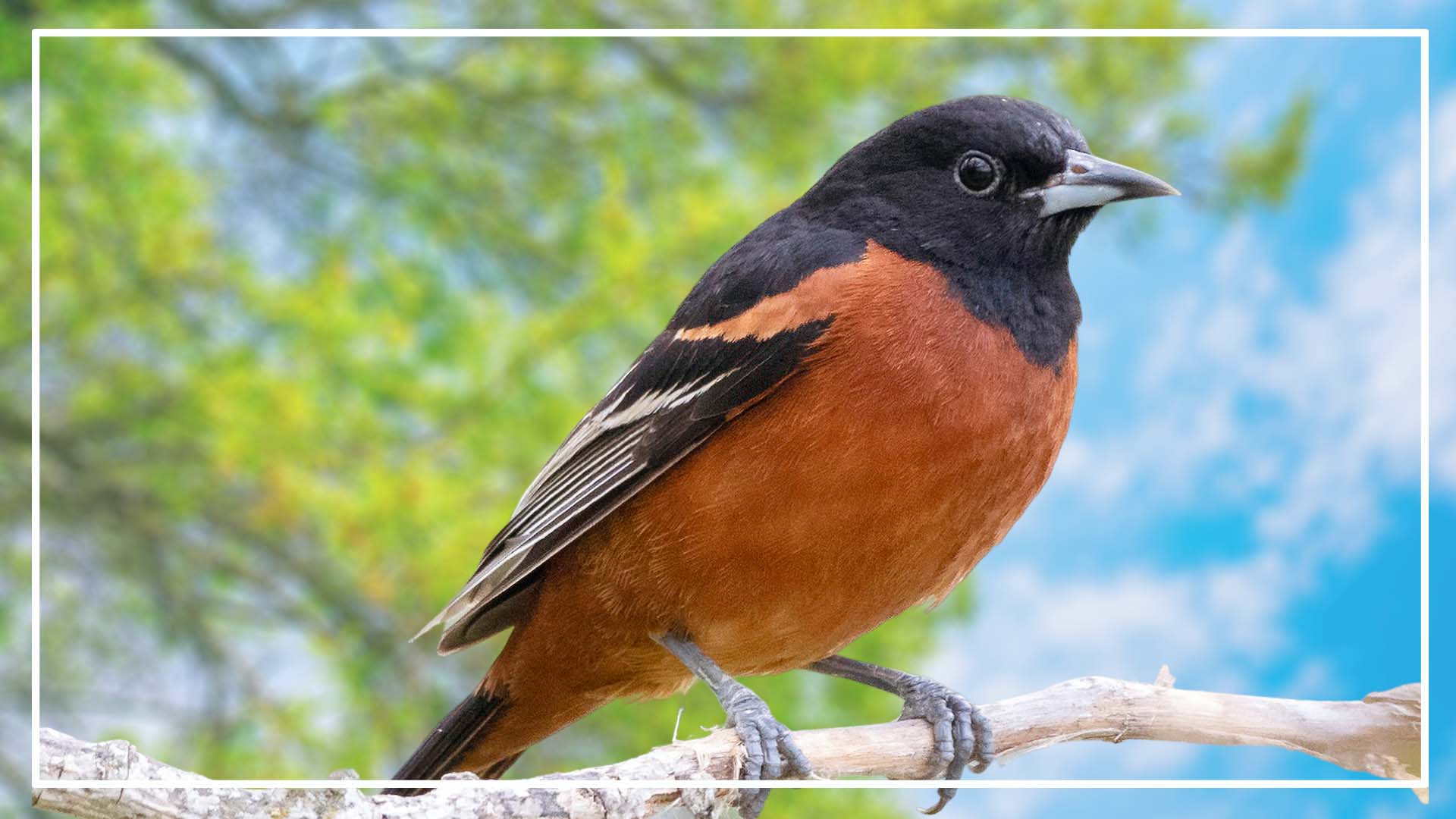
The Orchard Oriole (Icterus spurius) is a stunning example of a brown bird with an orange chest. It possesses a slender body, measuring around 6-7 inches in length, with a wingspan of approximately 8-9 inches. The plumage of the Orchard Oriole showcases a captivating blend of colors, including shades of brown and a striking orange hue. Its also include of Brown Birds with White Stripes on Wings.
The male Orchard Oriole boasts a vibrant color pattern. Its head, back, wings, and tail feathers are primarily a rich chestnut brown, providing a warm and earthy backdrop. However, what truly catches the eye is its chest and underparts, which are adorned with a brilliant orange hue. This orange chest is a distinctive feature of the male Orchard Oriole and adds a splash of vibrant color to its overall appearance.
In terms of behavior, the Orchard Oriole is an active and agile bird. It can be observed flitting among the branches of trees, shrubs, and orchards, searching for insects, fruits, and nectar to feed on. These birds are also skilled acrobats, often seen hanging upside down while foraging for food.
During the breeding season, male Orchard Orioles display an intricate courtship ritual. They showcase their brilliant plumage and sing melodious songs to attract potential mates. The male’s vibrant orange chest serves as a visual cue to both rivals and potential mates, establishing its presence and reproductive fitness.
As for their habitat, Orchard Orioles prefer open woodlands, forest edges, and orchards where they can find a combination of trees for nesting and open areas for foraging. They are primarily found in eastern and central parts of North America during the breeding season, and they migrate to Central America or northern South America during the winter months.
The Orchard Oriole is truly a sight to behold among the brown birds with orange chests. Its alluring color pattern, active behavior, and habitat preferences make it a remarkable species to observe in the natural world.
American Woodcock

The American Woodcock (Scolopax minor) is a fascinating member of the brown birds with orange chests. It possesses a unique and distinctive physical appearance. This plump, medium-sized bird measures about 10-12 inches in length, with a wingspan of approximately 18-20 inches.
The American Woodcock’s color pattern is a marvelous blend of brown shades, perfectly suited for its woodland habitat. Its head, back, and wings showcase a mottled mixture of dark and light brown feathers, providing excellent camouflage among the forest floor. The bird’s underparts, including its chest, are adorned with a rich orange hue that adds a captivating burst of color.
In terms of behavior, the American Woodcock is renowned for its fascinating courtship displays. Males engage in a mesmerizing performance, known as the “sky dance,” during spring evenings. They take flight and ascend to the sky in a series of spiral flights while making distinctive peent calls. Then, they suddenly descend in a zigzag manner, producing a high-pitched whistling sound with their wings. This display, accompanied by their vibrant orange-chest feathers, is intended to attract females and establish dominance among rival males.
The American Woodcock is primarily a nocturnal bird, relying on its well-developed sense of touch to locate earthworms and insects in the soil. It has a long, slender bill that allows it to probe the ground for its preferred prey. These birds can often be spotted in damp woodlands, wet thickets, and along the edges of streams or marshes, where they find optimal feeding conditions.
During the nesting season, the American Woodcock constructs a shallow ground nest lined with leaves and other plant material. This nest is carefully hidden beneath dense vegetation to provide protection for the eggs and young chicks. The bird’s cryptic coloration, including the orange chest, helps it blend seamlessly with the surrounding leaf litter, ensuring its safety from potential predators.
The American Woodcock’s physical description, captivating color pattern, unique behaviors, and habitat preferences make it a remarkable and sought-after species among enthusiasts of brown birds with orange chests. Observing this remarkable bird in its natural environment is a truly memorable experience that showcases the wonders of nature’s diversity.
Orange-breasted Waxbill
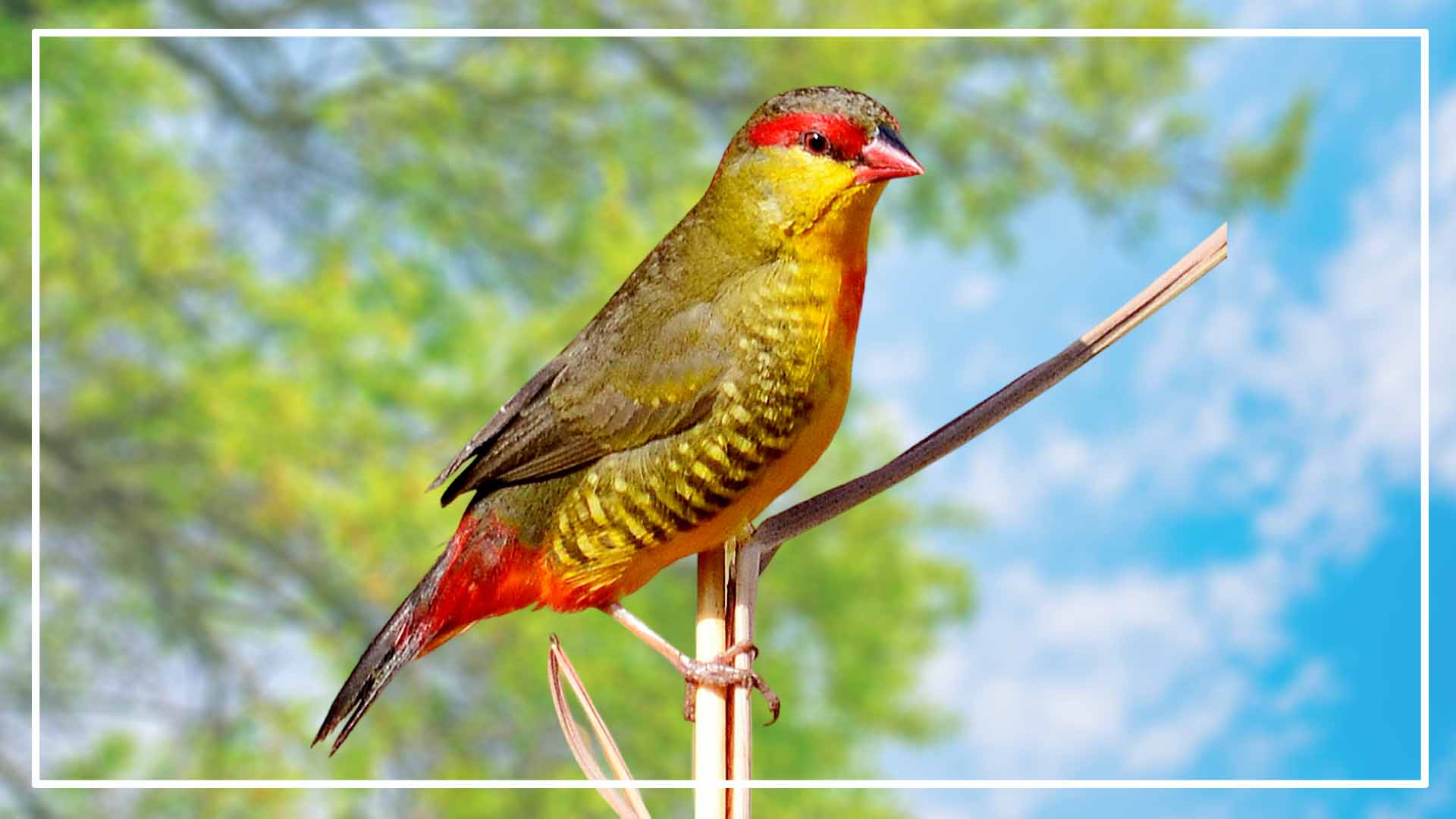
The Orange-breasted Waxbill is a delightful member of the brown birds with orange chests. This small finch-like bird displays a charming physical description that captures the attention of bird enthusiasts. It measures around 4-4.5 inches in length, with a slender body and a short, conical beak.
The Orange-breasted Waxbill’s color pattern is truly captivating. Its head, back, and wings are primarily adorned with shades of brown, providing excellent camouflage in its natural habitat. However, what sets this bird apart is its vibrant orange breast, which acts as a focal point of its appearance. The orange chest serves as a brilliant contrast against the surrounding brown plumage, making it a truly striking feature of this species.
In terms of behavior, the Orange-breasted Waxbill is a social and active bird. They are often seen in small flocks, engaging in playful interactions and energetic flights. Their flights are characterized by a fluttering, bouncy motion, with their wings producing a soft whirring sound. These birds are known for their cheerful and melodic songs, which they use for communication and courtship displays.
The Orange-breasted Waxbill primarily feeds on a varied diet of small seeds, grains, and insects. They have a preference for grassy areas, open woodlands, and savannahs, where they can find abundant food sources. These birds have a remarkable ability to extract seeds from grass stalks and forage for insects among foliage and on the ground.
In terms of habitat, the Orange-breasted Waxbill thrives in a range of environments, from grasslands and open woodlands to cultivated areas and gardens. They are native to sub-Saharan Africa and can be found in countries such as South Africa, Zimbabwe, and Mozambique. These birds are often found in areas with tall grasses, reeds, or shrubs, where they build their nests and seek shelter.
The Orange-breasted Waxbill’s physical description, vibrant color pattern, active behavior, and habitat preferences make it a delightful and enchanting species among brown birds with orange chests. Its presence adds a touch of brightness and cheer to its surroundings, reminding us of the incredible diversity found in the avian world. Observing these delightful birds in their natural habitats is a rewarding experience that offers a glimpse into the beauty and intricacy of nature.
Rufous Hummingbird
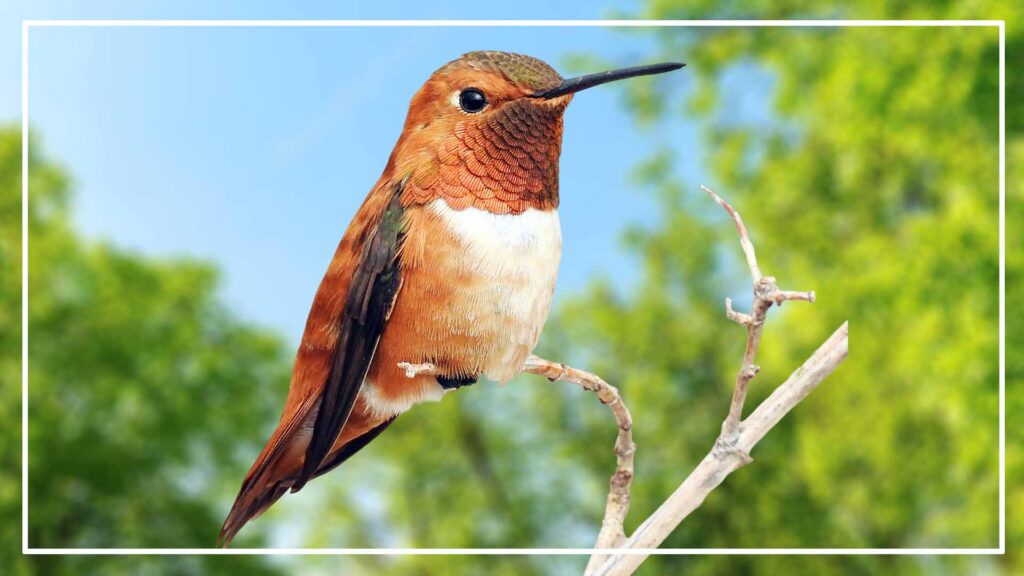
The Rufous Hummingbird (Selasphorus rufus) is a dazzling representative of the brown birds with orange chests. This small bird possesses a unique physical description that distinguishes it from other species. It measures around 3-4 inches in length and has a wingspan of approximately 4-5 inches.
The color pattern of the Rufous Hummingbird is a sight to behold. The male showcases a remarkable combination of brown and orange hues. Its head, back, and wings are adorned with vibrant reddish-brown feathers, while its chest and underparts display a striking orange color. This orange chest serves as a brilliant highlight against its predominantly brown plumage, making the Rufous Hummingbird a true gem of the avian world.
In terms of behavior, the Rufous Hummingbird is known for its agility and energy. It is a highly territorial bird that fiercely defends its feeding territories and nesting sites. These birds have incredible flying abilities, capable of hovering mid-air, flying backwards, and darting swiftly from flower to flower. Their specialized long, slender bills allow them to probe deep into tubular flowers to extract nectar, which is their primary source of sustenance.
The Rufous Hummingbird is a long-distance migratory bird, covering vast distances during its annual journey. It breeds in the western parts of North America, including Alaska and western Canada, and migrates southward to spend the winter in Mexico and Central America. The timing of their migration coincides with the availability of nectar-rich flowers along their route.
When it comes to habitat, the Rufous Hummingbird occupies a variety of environments. During the breeding season, they prefer forested areas, mountainous regions, and even suburban gardens with abundant flowering plants. In their wintering grounds, they can be found in tropical and subtropical forests, as well as coastal areas with flowering vegetation.
The Rufous Hummingbird’s physical description, vibrant color pattern, acrobatic behavior, and migratory lifestyle make it a true marvel of nature. Its presence adds a splash of energy and beauty to any environment it inhabits. Observing these tiny birds with their mesmerizing orange chests is a testament to the astonishing diversity found among brown birds in the avian kingdom.
Northern Cardinal
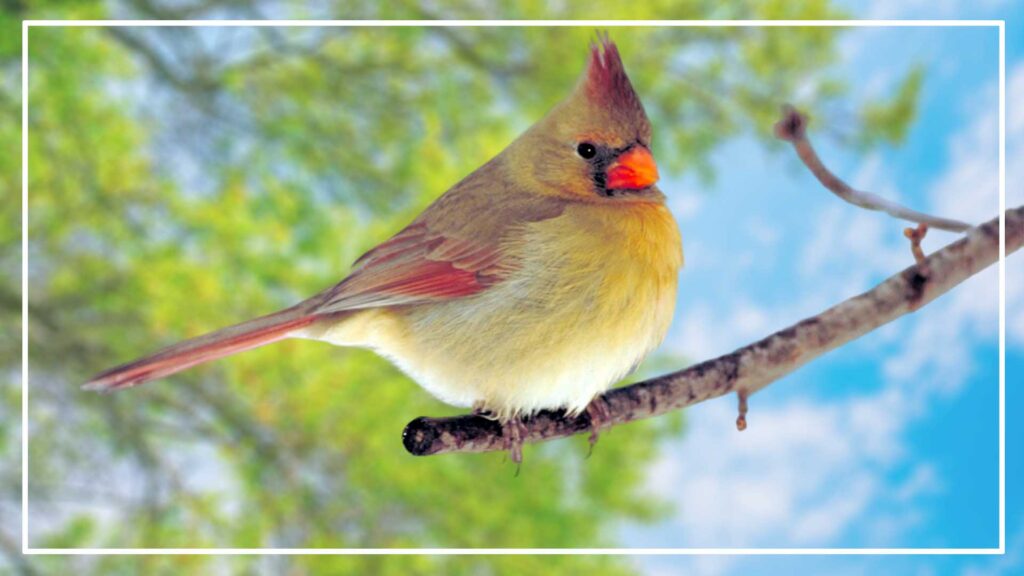
The Northern Cardinal (Cardinalis cardinalis) is a captivating bird known for its striking appearance and melodic song. This species, often associated with the color red, stands out as a vivid representative among the brown birds with orange chests.
The Northern Cardinal possesses a robust and medium-sized body, typically measuring around 8-9 inches in length. The male cardinal is particularly eye-catching, showcasing a brilliant crimson-red plumage that covers its crest, wings, and tail. However, it is worth noting that while the male’s chest appears red, it may have a tinge of orange in certain lighting conditions, giving it a warm and vibrant appeal. In contrast, the female has a more subtle beauty, with a primarily grayish-brown coloration on its feathers, including a reddish tinge on its crest, wings, and tail.
In terms of behavior, the Northern Cardinal is a year-round resident in many parts of North America, making it a beloved and familiar sight in backyards, gardens, and parks. These birds are known for their melodious songs, with the male’s rich, whistling tunes filling the air during the breeding season. Cardinals are monogamous and form strong pair bonds, often staying with the same mate for multiple breeding seasons.
The Northern Cardinal is primarily granivorous, feeding on seeds and fruits, but it also consumes insects and other small invertebrates. Their strong beaks are well-suited for cracking open seeds and foraging through vegetation. They can be seen perching on branches or hopping along the ground in search of food, often visiting bird feeders where seeds are readily available.
In terms of habitat, Northern Cardinals are adaptable birds that can be found in various environments, including woodlands, forests, shrublands, and residential areas with ample vegetation. They typically build their nests in dense shrubs, bushes, or low tree branches, using twigs, grass, and leaves as construction materials.
The Northern Cardinal’s vibrant plumage, beautiful song, and adaptability make it a cherished and iconic species among bird enthusiasts. Its presence adds a touch of elegance and vibrancy to the natural world, making it a delightful sight for all who have the pleasure of encountering this remarkable brown bird with its captivating orange-red chest.
Stonechat
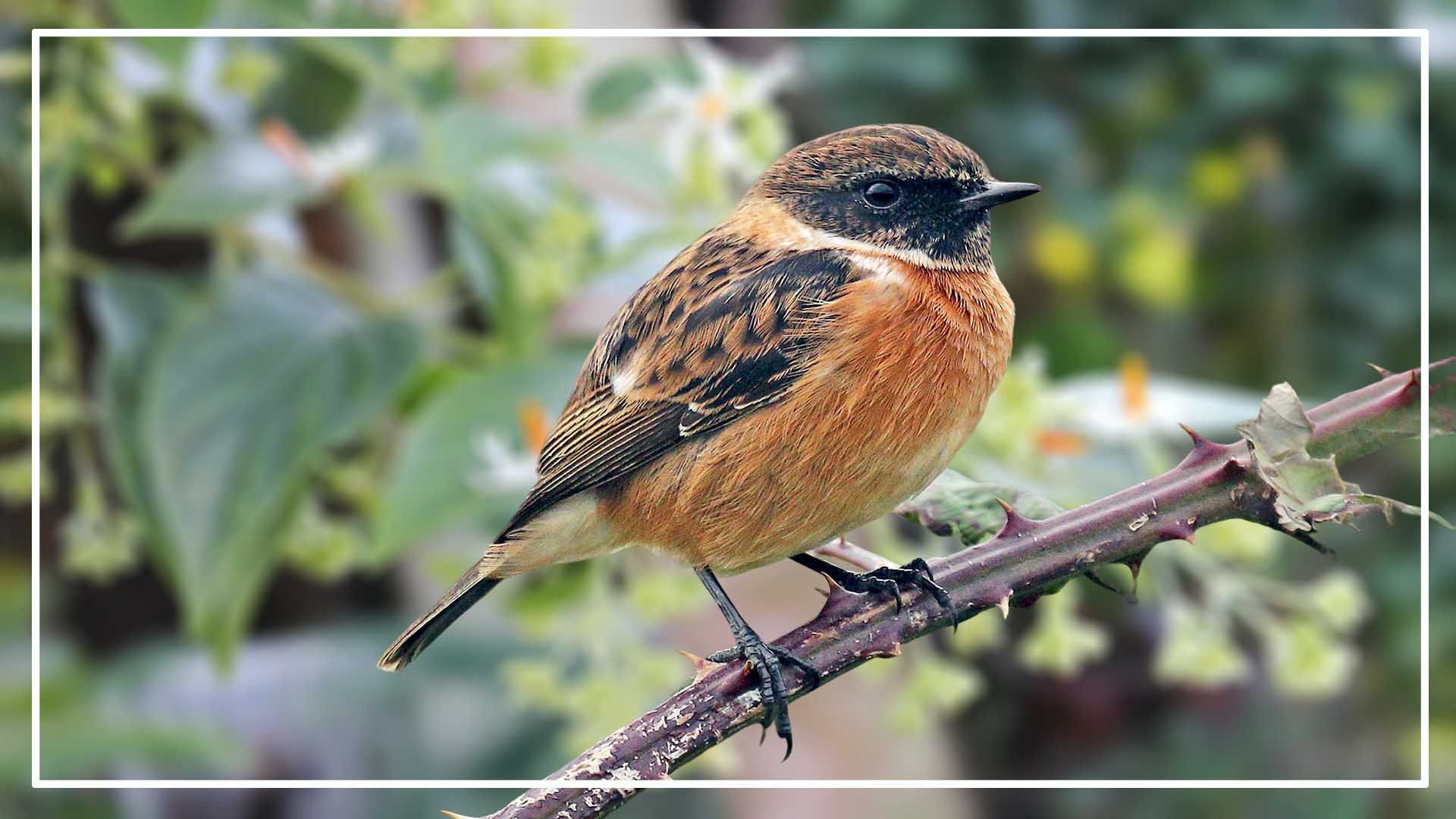
Stonechat is a charismatic bird that belongs to brown birds with orange chests. This small passerine species exhibits a unique and distinctive appearance, captivating observers with its striking colors and lively behavior.
The Stonechat has a compact body, measuring around 5-6 inches in length. The male Stonechat flaunts a vibrant plumage that features a combination of brown, black, and orange tones. Its head and upper parts display rich brown feathers, while the throat, chest, and underparts boast a warm orange hue. Additionally, the male Stonechat is adorned with a small black patch on its neck, giving it a distinctive touch.
In contrast, the female Stonechat has a more subdued appearance. Her plumage consists of various shades of brown, providing excellent camouflage in their preferred habitats. She displays a lighter orange color on her throat and breast, which is less prominent compared to the male’s vibrant chest.
Stonechats are known for their lively and energetic behavior. They are often spotted perching atop bushes or fences, frequently flicking their wings while making their characteristic “chacking” or “chatting” calls. Their name, “Stonechat,” comes from this distinct vocalization, which resembles two stones being struck together.
These birds are territorial and defend their nesting sites and foraging areas with great determination. They primarily feed on insects, spiders, and small invertebrates, which they capture by hopping or flying down to the ground. Stonechats are skilled hunters, using their sharp eyesight to spot prey and their agile movements to catch it.
Stonechats are typically found in open grasslands, heathlands, coastal scrub, and other habitats with low vegetation. They are prevalent in Europe, Asia, and Africa, with different subspecies occupying specific regions. During the breeding season, Stonechats construct nests from grass, moss, and other plant materials, often hidden among vegetation or in low shrubs.
The Stonechat’s distinctive appearance, lively behavior, and habitat preferences make it a fascinating member of the brown birds with orange chests. Observing these birds in their natural surroundings provides a glimpse into the intricate web of nature’s diversity, reminding us of the remarkable variety of life that exists in our world.
Conclusion
The brown birds with orange chests, such as the American Robin, Orchard Oriole, American Woodcock, Orange-breasted Waxbill, Red Knot, Rufous Hummingbird, Northern Cardinal, and Stonechat, are a diverse and captivating group of avian species. Each bird possesses its own unique physical description, color pattern, behavior, and habitat preferences, showcasing the remarkable variety found in the natural world.

